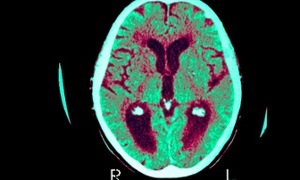
Scientists believe they may have found a new weapon in the fight against Alzheimer’s disease – not in the form of a drug but in focused beams of ultrasound.
While the approach has only been tested in mice, researchers said on Wednesday it proved surprisingly good at clearing tangles of plaques linked to Alzheimer’s in the animals’ brains and improving their memory, as measured by tests such as navigating a maze.
In the past, high-energy ultrasound has been combined with injected microbubbles, which vibrate in response to sound waves, to get drugs across the so-called blood brain barrier.
But the new research, published in the journal Science Translational Medicine, is the first demonstration that ultrasound alone might have a beneficial effect on the memory-robbing condition.
“Our research was very exploratory and we really didn’t expect to see such a massive effect,” Juergen Goetz of the University of Queensland in Brisbane, one of the study authors, said. “I’m really excited by this.”
After several weeks of treating mice that had been genetically altered to produce amyloid plaques, the scientists found the ultrasound almost completely cleared the plaques in 75% of the animals, without apparent damage to brain tissue.
While there is still some debate as to whether plaques are a cause or a symptom of Alzheimer’s, the experiment found that the treated mice had improved memory, as measured by three different tests, compared with untreated ones.
The technique works by stimulating microglial cells, which form part of the brain’s immune system, to engulf and absorb the plaques.
Goetz stressed that his research was at a very early stage and it would be several years before it could be tested in people. Several hurdles must be overcome first, including long-term checks for side effects in animals and much more research into whether the approach will work with thicker skulls and larger brains.
The next step is to treat sheep, with data from that experiment expected later this year.
Ultrasound devices capable of penetrating the human brain are already being tested for other conditions, with Israeli company InSightec pioneering it for tremors and chronic pain.
Dementia, of which Alzheimer’s is the most common form, affects close to 50m people worldwide and that number is set to reach 135m by 2050, according to Alzheimer’s Disease International, a non-profit campaign group.
